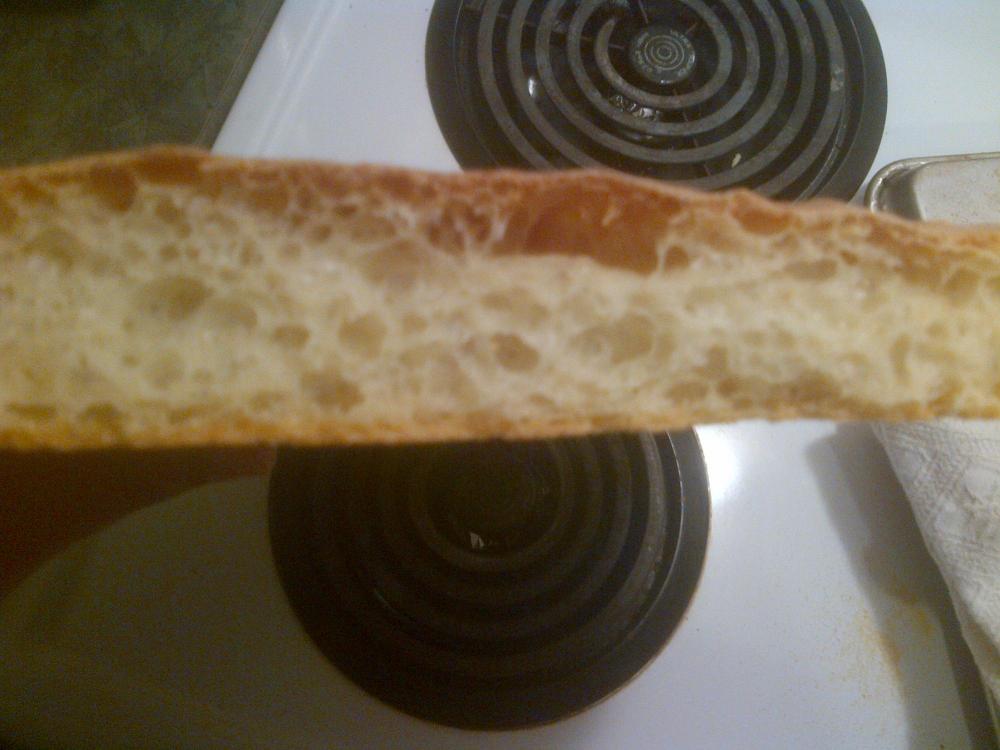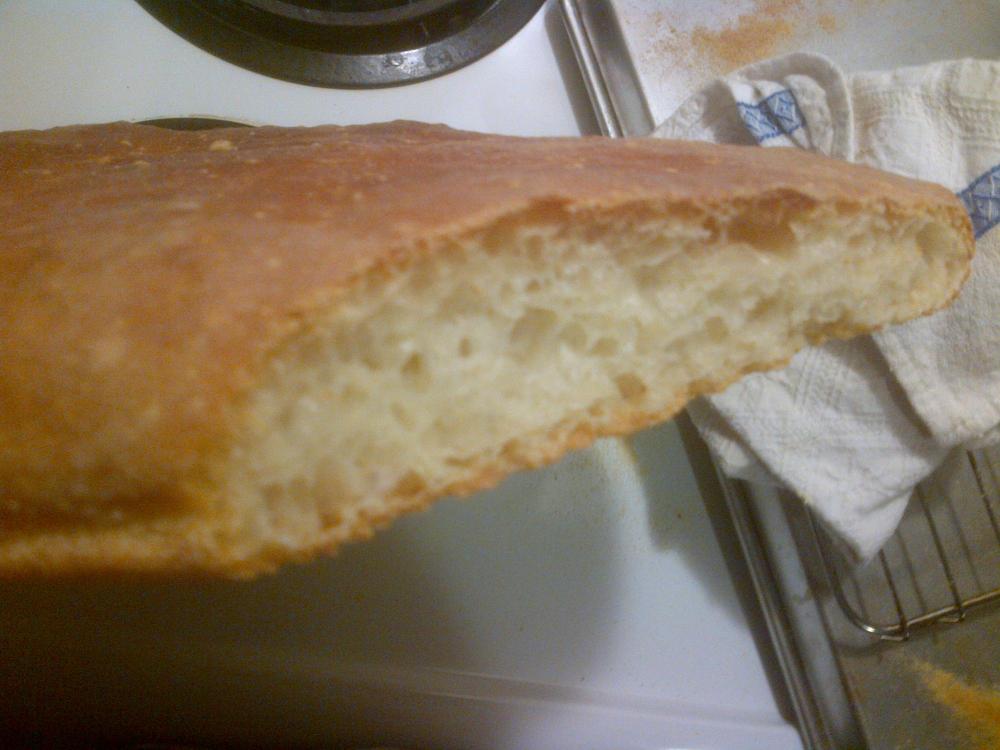
chef koo
-
Posts
517 -
Joined
-
Last visited
Content Type
Profiles
Forums
Store
Help Articles
Posts posted by chef koo
-
-
I know it's standard to soak beans to cook since they'll split, take longer to cook... and I think that's it. but if you're making a puree, is it still a thing? I mean, they'll cook eventually and I don't really care if they split, since it's going to be a puree. Am I missing anything? The only reason I thought would be relevant would be to ensure the ratio of water wouldn't be effected since beans that split soak in more water, and particulate matter will float into the cooking liquid. But if I measure correctly, I should be good, right?
Also there is that oven method, which gives a good compromise of the structure of soaking but without the time commitment.
-
@Weinoo yah I saw those. That's what I was ttrying to avoid. They're suer expensive, and I'm operating a restaurant in a super remote region, so if it breaks down, I'm toast!
-
 2
2
-
-
I was looking at purchasing a green onion slier, but they're about $700. The Kitchenaid slicer attachment is only $70 on Amazon.
My concerns are whether it can slice thinly enough.
My other concern was if it'll crush the green onion instead of slicing it. Is the blade sharp/angled enough to get a clean cut?
-
2 hours ago, FeChef said:
What about them?
-
I'm looking to make a lactose free hollandaise. So I'm going with a sabayon, lemon, cayenne, and canola oil. If I want to add a buttery flavor, I'm confused about which one to use...
-
Is butter extract super potent? As in a couple drops and you're in butter town?
-
If I had a side by side dish, whether it be with hollandaise, or a cake, or anything, could I taste a significant difference in extract vs flavoring?
-
Is there a major price difference?
-
-
I feel it's well known that compared to everywhere else, BC liquor prices are high. Is there a work around without relying on duty free shopping? I don't go down there enough. I heard of some people buying in bulk from Alberta, but I've been trying to google it and can't find anything. From what I gather you can't buy wholesale either unless you have a license to sell.
-
I understand the orthodoxy around gelatin but for most of my uses, I've never bothered and have been fine. 99% of what I use it for it's going to be solidifying a liquid, so I just simmer it until it's completely dissolved (I know you're not supposed to boil it either, but never been an issue). Problem solved. Simmering it while stirring removes any lumps, I've never seen any issues with clouding. If you're making a mousse where you can't be as aggressive, I can see the benefit, but EVERY recipe I see regardless of how the gelatin is being handled, calls for blooming. It almost has a putting a cork in a pot of octopus to make it more tender feel to it.
-
 1
1
-
-
That being the case, I think I'll stick with the non fluted options
-
 1
1
-
-
I know you can get non-fluted pans, and ones that are perforated, but the vast majority of the ones on the market are fluted. I can't think of a practical reason why that would be. If anything, it seems disadvantageous. It's more labour intensive to line with the dough, they seem more complicated to produce, harder to clean.
Is it for the structural integrity? I mean, how much structural stress could a tart be under, where that fluting would actually make a difference? As far as I can tell, it's just for the look of it.
-
 1
1
-
-
If you're going to simmer gelatin in a liquid, is there any point in blooming it?
-
I've seen a number of recipes involving whole, uncut leeks. Is the idea to clean them whole (Is that possible?); buy them dirtless (is that also possible?), or is it no possible and you simply accept the dirt and just eat it?
-
What's life like? How did you get your job?
I've been a chef for a while now and I'm looking to work in a remote camp (oil, mining, off shore, ect), but I've heard a lot of stories and I'd like to get the straight dope on the situation.
-
As I mentioned before, if that is the case, why not simply proof the whole batch, but for less time?
-
So if I understand correctly, pre-fermenting isn't so much about the product as it is the logistics?
-
Interesting. I've never worked in a professional setting, but I've noticed that the technique is shown and recommended in cookbooks and cooking shows as well. I figured there was a pragmatic reason for it, in regards to the end product.
-
So I made this loaf, just now. The whole batch of dough was made last night and proofed. Flavor was great and the texture was great. In comparison to baking a loaf with a preferment, the flavor was slightly better as was the texture, but not by much. Either way for future reference, I'm doing away with a pre-ferment. It never made sense to begin with and it still doesn't. Just an extra step that doesn't do anything, in my mind.
The recipe I used was follows
500g flour
400ml water
10 g salt
5 g yeast
Just mixed it all together and kneaded for a few minutes. Proofed it over night and baked at 450 for 40 minutes
-
 1
1
-
-
I'm not the most well versed in baking, but it's my understanding that the longer you knead something, the more robust the strands of gluten become. It's also my understanding that if you add more fat and/or moisture to a dough, it inhibits the formation of gluten. So if both of these are true, would it make sense that a bread dough with something like 70% moisture, take a VERY long time to knead to build up the gluten? Would 30 minutes plus be out of the question?
-
@keychris, could be, but I'm guessing that the benefit is something a bit more concrete.
@cakewalk, Great link. I think it really does come down to simply trying it and seeing for myself.
@Lisa Shock, I get that over proofing leads to a sour taste, so why not proof the whole batch but for less time? As for the fridge space, this technique has been adopted by home cooks as well. If that is the reason, I'd simply rather not, since fridge space isn't an issue for me. If it is the reason, would it make sense to assume that proofing the whole batch wouldn't make a difference?
Either way, the feeling that I got is that I'm going to have to find out on my own. I'll report back.
-
What are the benefits of making a pre-ferment? And I don't mean the enhanced flavor and/or texture. I get that part. I mean why only pre-ferment a portion of the dough? Why not make the dough all at once and allow it to sit in the fridge over night. If a pre-ferment is a way to enhance flavor and texture, would it not make sense to pre-ferment the whole batch? At first I figured it was to taper the amount of enhancing. But then couldn't you simply pre-ferment the whole batch of dough but for less time?
-
 1
1
-
-
Interesting reads. I called a local sausage maker and he said that the next time he's making it will be in October since it's a sausage typically eaten during special occasions. His recommendation was a smoked Mennonite sausage. In his opinion, it was the closest, so I'll be going with that.
-
Is it cured like a salami? I've never had it so I'm not sure where to begin looking for a substitution
-
I'm trying to find some Morteau sausage. If in the chance I'm unsuccessful, what's a good substitution?
-
I've begun a program with a weight loss company. One aspect of the program is the use of seeds. I want to make a granola bar-esque type thing. I want to take these seeds and press them into a bar. I'm looking for an adhesive that will hold everything into a bar, but it can't be sugary or high on the glycemic index. Anyone have any ideas? I was thinking of a puree of dried apricots or dates. Anyone have any ideas?
-
Let me rephrase my title. It's not a croquembouche question. It's a lot of profiteroles stacked in a tower question. I'm going for looks and taste. Texture isn't my top priority. I'm going to maximize it however not at the expense of the look or the flavor of the tower.



Do you need to soak beans for a puree?
in Cooking
Posted
Pass it through a strainer or a food mill after cooking. Or even leave the skins and buzz it in a food processor. I'm making to yangaeng with different beans. I have a feeling they'll taste about the same. Either way the texture doesn't need to be super fine, but even if it does, there are ways